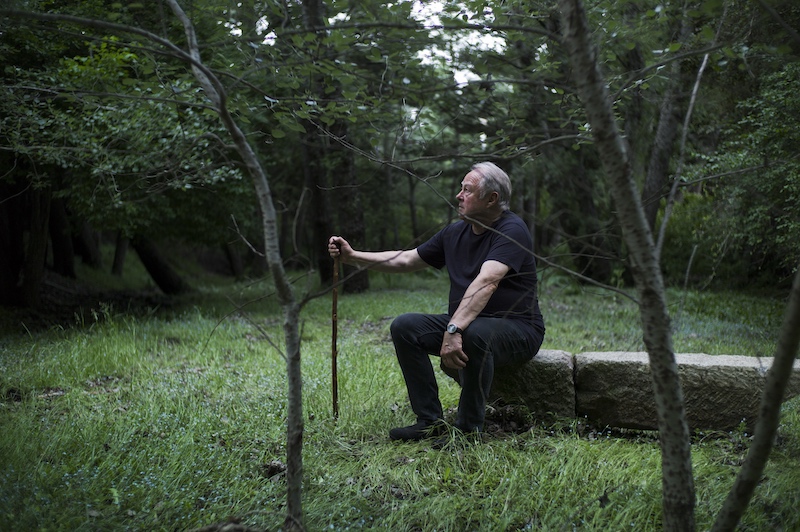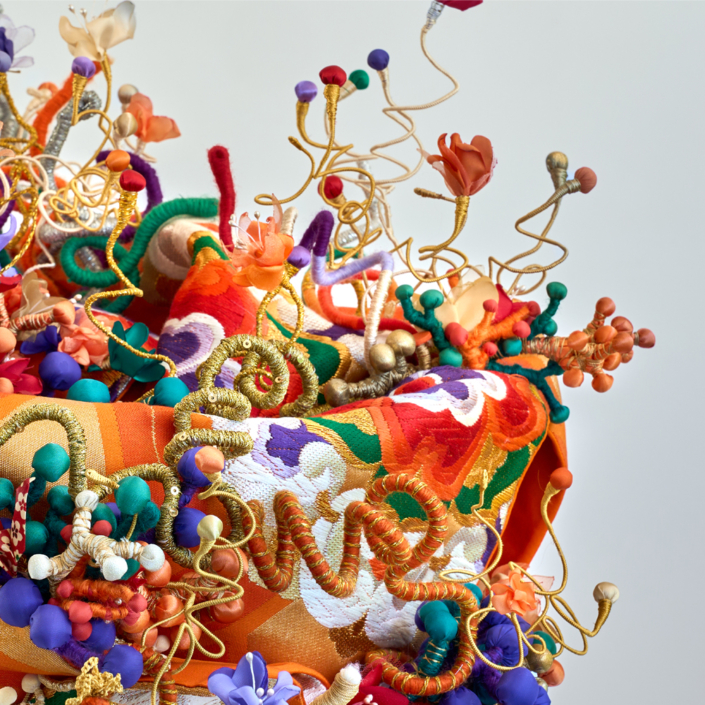On The World Stage: Imants Tillers
Imants Tillers’ themes of displacement, exile and the legacy of European conquest strike a particular note for Latvians, whose own history is marked by invasion, occupation, and diasporic dispersion.
Words: Ingrid Periz
Photography: Sean Davey
In the late 70s Imants Tillers was a precocious Post-Conceptualist, with work included in documenta and later in the São Paulo and Venice Biennales, along with exhibitions at the New York Guggenheim. His borrowings from other artists and astute theorizing made him arguably Australia’s best known post-modernist in the 80s and 90s, yet his appropriation of material from Indigenous artist, Papunya-based Michael Nelson Jagamara in The Nine Shots (1985) proved controversial when the work was shown in the 1986 Sydney Biennale. 15 years later the two artists began painting together, initiating a long-standing relationship that speaks of reconciliation and respect, and have produced work like The Messenger (2014), which is now held in the collection of Parliament House, Canberra.
Australian-born, Tillers is the child of Latvian parents. He grew up speaking his parents’ native tongue when Latvia no longer existed as an independent country. His thinking about identity and place has been strengthened by his life in Cooma. Here he paints, gardens extensively, and walks constantly, “traversing,” as he puts it, “a landscape of huge horizons.” He has twice won the Wynne Prize for landscape painting.
In April last year a Latvian film crew flew to Papunya in the Northern Territory to follow Tillers on a visit to Jagamara. The film, Thrown into the World, a documentary on Tillers’ work, will premiere in the European summer in 2018 as part of Latvia’s centenary celebrations.
Also part of the Baltic republic’s festivities set to open in July 2018 at the Latvian National Museum of Art in Riga, is Imants Tillers’ Journey to Nowhere, a retrospective spanning more than four decades which includes a selection from the Tillers/Jagamara collaboration.
Michael Eather, director of Brisbane’s Fireworks Gallery and the person responsible for bringing Tillers and Jagamara together, accompanied the recent Papunya visit. I asked him how their collaboration had changed since their initial meeting, made to acknowledge the unintentional disrespect shown by Tillers’ appropriation. “Both artists have since grown very fond of each other,” he tells me. “Their creations are an evolving, organic process underpinned by chance.” Eather says that whatever curiosity the Latvian audience might have about Tillers’ work with Jagamara, indigenous references along with Latvian folk imagery have been part of his work for decades and “between Riga and Papunya there will perhaps be a sharing of perceived isolation and dislocation.”
A work included in Tillers’ exhibition at Roslyn Oxley9 Gallery, Sydney late in 2017, and slated for inclusion in the forthcoming European show, fleshes out Eather’s hunch. Journey to Nowhere shows a luminescent view of Riga, with the river Daugava in the foreground. In the lower right hand corner a quote reads “We have decided not to die.” Tillers wrote that the Sydney exhibition was “all about belonging and not belonging – about relationships between a “fatherland” and its diaspora. In many ways this is almost the universal leitmotif of the 20th century.”
Tillers’ themes of displacement, exile and the legacy of European conquest strike a particular note for Latvians, whose own history is marked by invasion, occupation, and diasporic dispersion. Dr Elita Ansone curator of Journey to Nowhere, calls Tillers an important representative of the Latvian diaspora. The most striking aspect of his practice, in her view, is the way “it unifies various artworks.” And while the collaboration with Jagamara “might seem exotic… there is another aspect. For centuries Latvians have been under German, Polish, Swedish, and Russian power.” They have been “Aboriginals in their own Country, therefore they feel solidarity with oppressed peoples. We are interested in the perception of the Australian Aboriginal world.”
Riga is a two-hour plane ride from most European capitals. In a world awash with refugees and imploding with separatist sentiment, Tillers’ abiding concern with a sense of placed-ness should find a receptive audience a few weeks after the Basel art fair.
This article was originally published in Art Collector issue 83, JAN – MAR, 2018.









